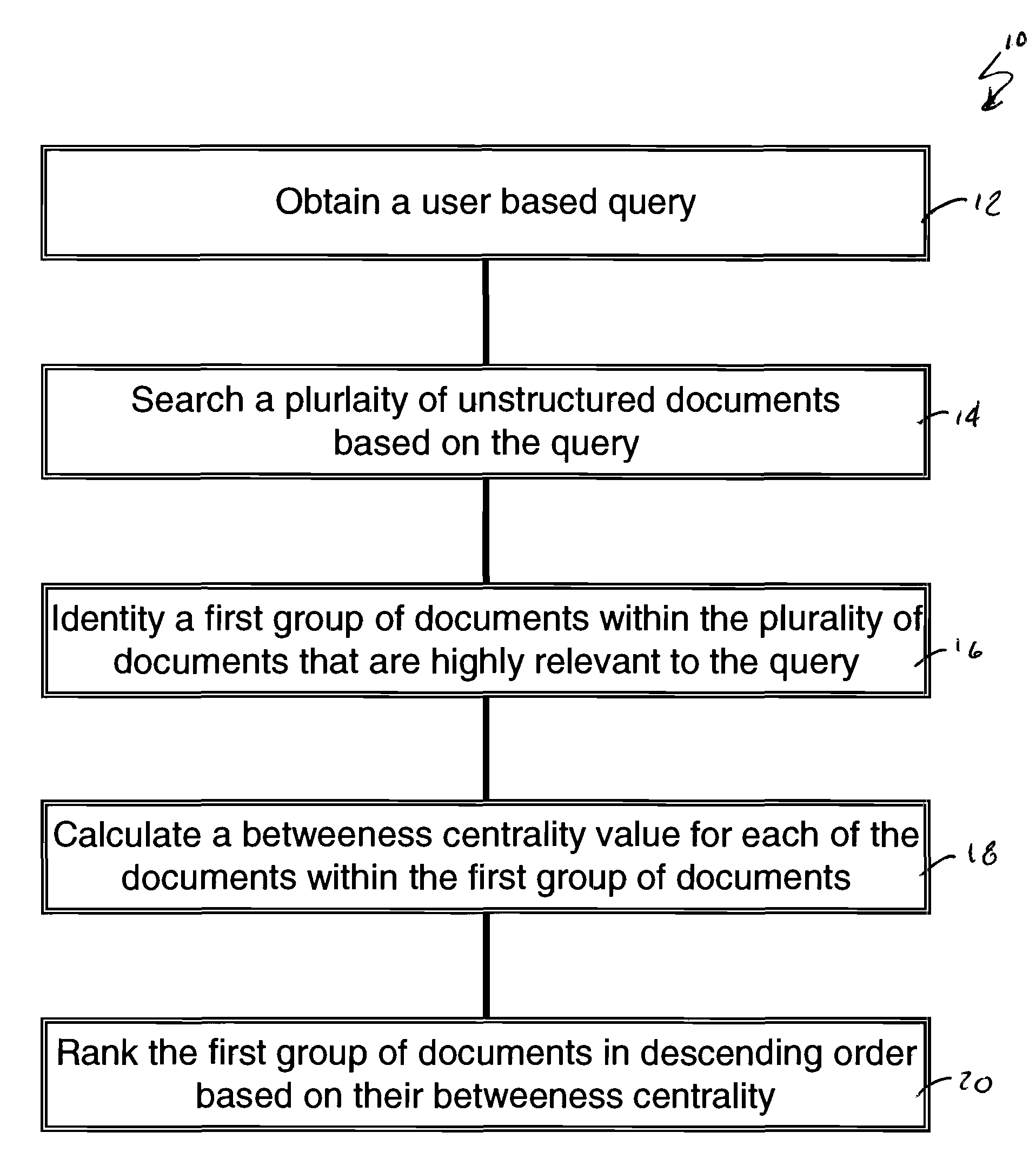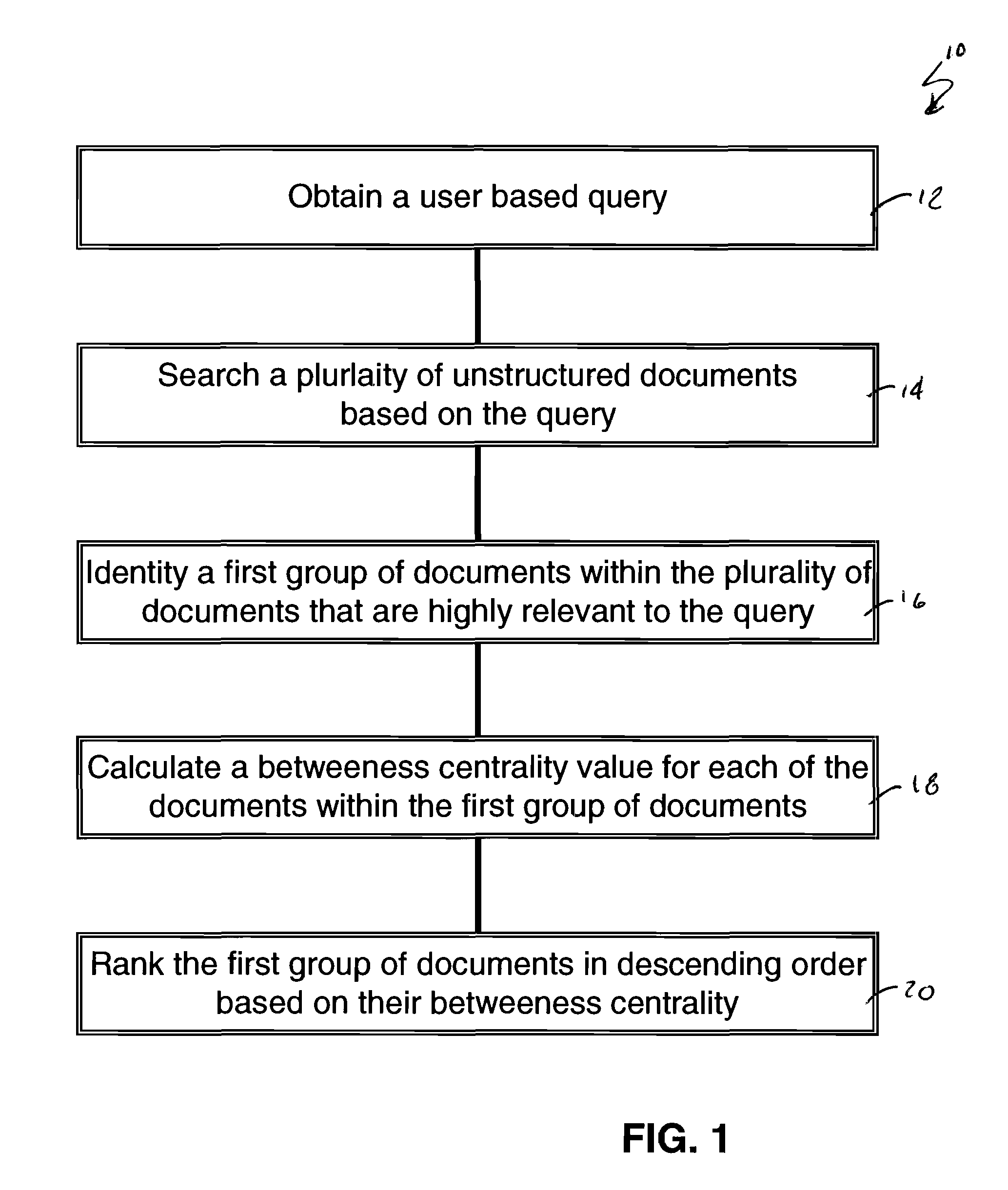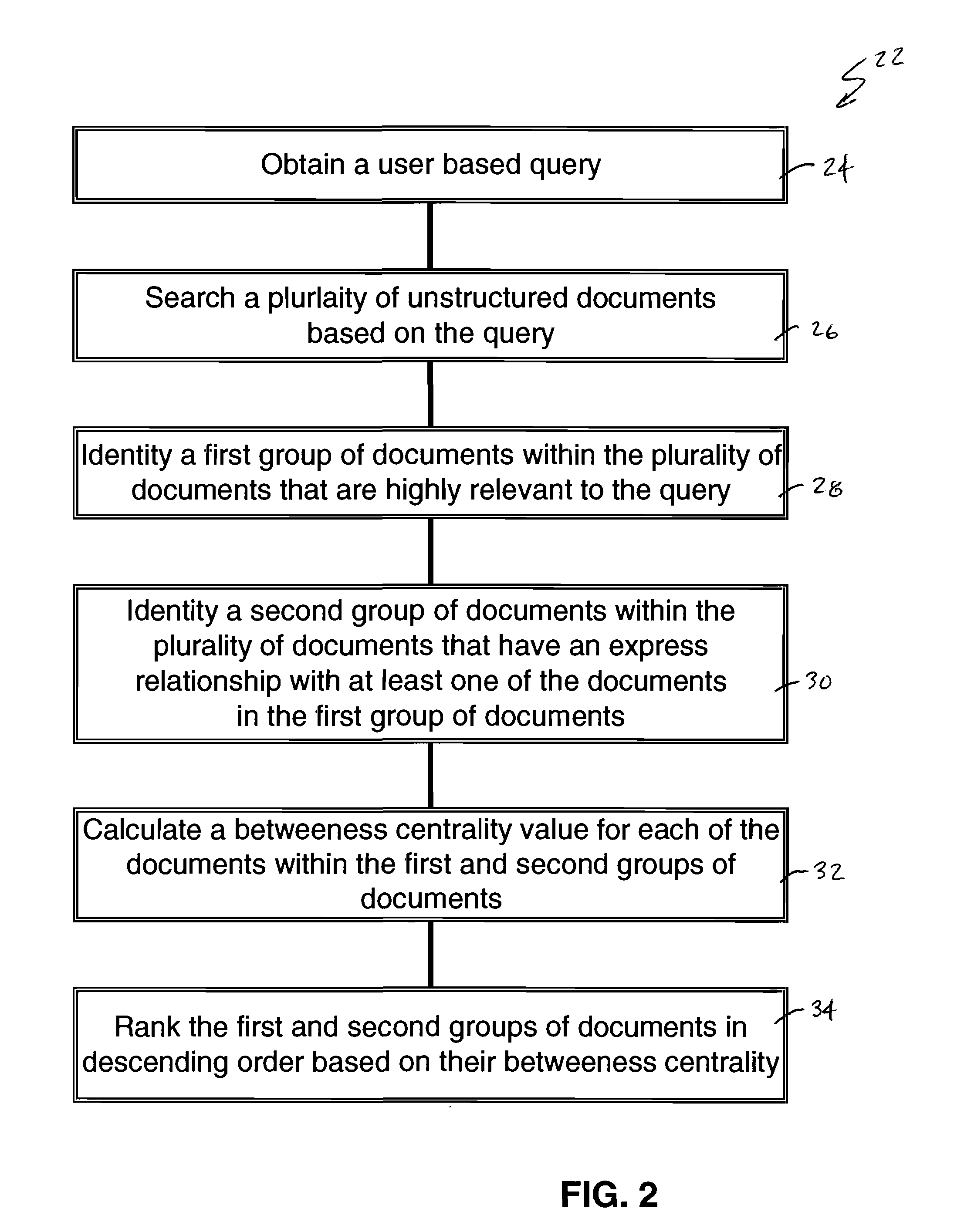Process for analyzing interrelationships between internet web sited based on an analysis of their relative centrality
a technology of interrelationship and relative centrality, applied in the field of system for measuring, analyzing, and graphically depicting the existence and relative strength of interrelationship between unrelated documents, can solve the problems of user excessive amount of time and resources, inability to discriminate between documents, and user's inability to access relevant articles, etc., to achieve quick and easy identification
- Summary
- Abstract
- Description
- Claims
- Application Information
AI Technical Summary
Benefits of technology
Problems solved by technology
Method used
Image
Examples
Embodiment Construction
[0026]Now referring to the drawings, the method of the present invention for analyzing a plurality of unstructured documents in order to identify a discrete group of those documents that have a particularly high degree of relevancy to a user based query is shown and generally illustrated at the flow charts in FIGS. 1-3. Further, a method of providing a visual depiction of the interrelationships and the strength of those relationships as compared to the user-based query is illustrated at FIGS. 4 and 5.
[0027]Turning to FIG. 1, in the most general embodiment, the present invention provides a method 10 for analyzing and ranking interrelationships that exist within a plurality of unstructured documents to identify documents having a high relevancy to a user based query. In operation, the method 10 first provides for obtaining a user-based query 12. Next, the user-based query is employed to search a plurality of unstructured documents 14 in order to identify at least a first group of docu...
PUM
 Login to View More
Login to View More Abstract
Description
Claims
Application Information
 Login to View More
Login to View More - R&D
- Intellectual Property
- Life Sciences
- Materials
- Tech Scout
- Unparalleled Data Quality
- Higher Quality Content
- 60% Fewer Hallucinations
Browse by: Latest US Patents, China's latest patents, Technical Efficacy Thesaurus, Application Domain, Technology Topic, Popular Technical Reports.
© 2025 PatSnap. All rights reserved.Legal|Privacy policy|Modern Slavery Act Transparency Statement|Sitemap|About US| Contact US: help@patsnap.com



